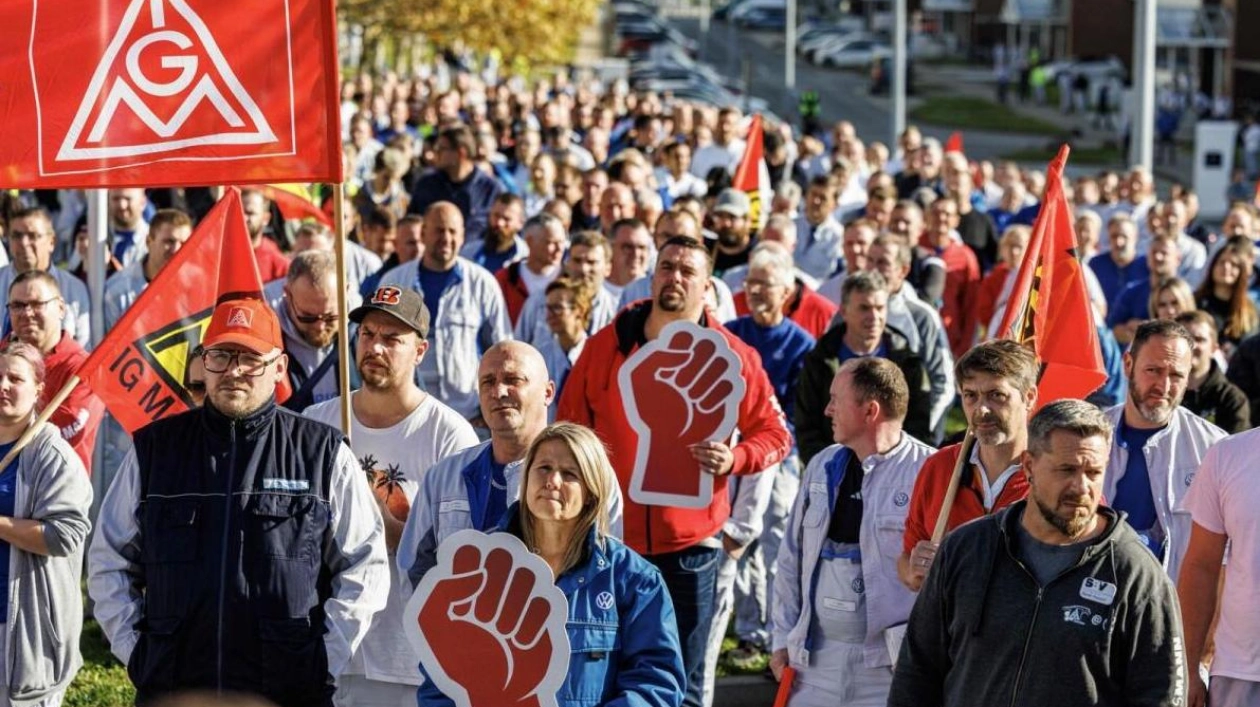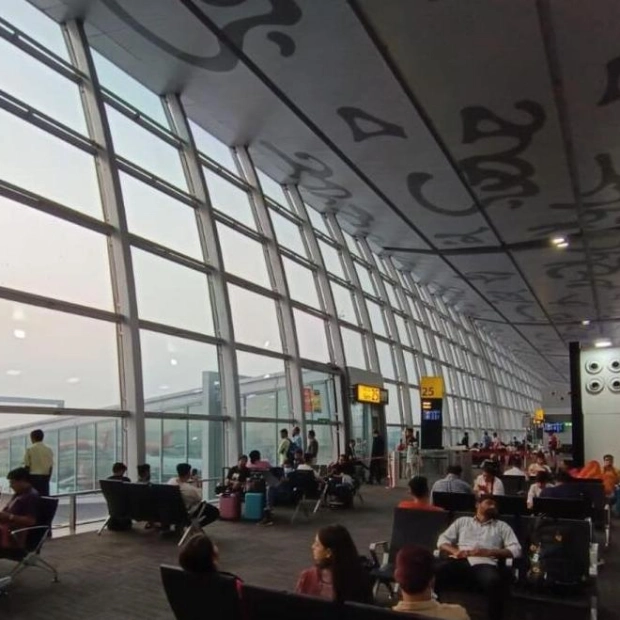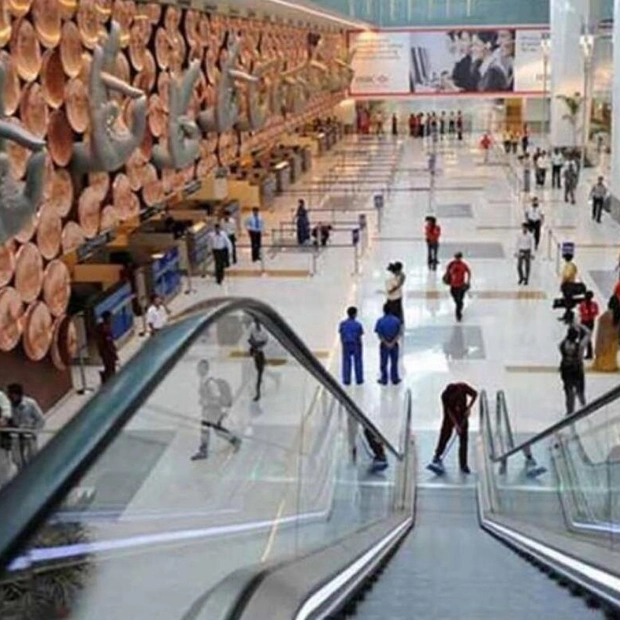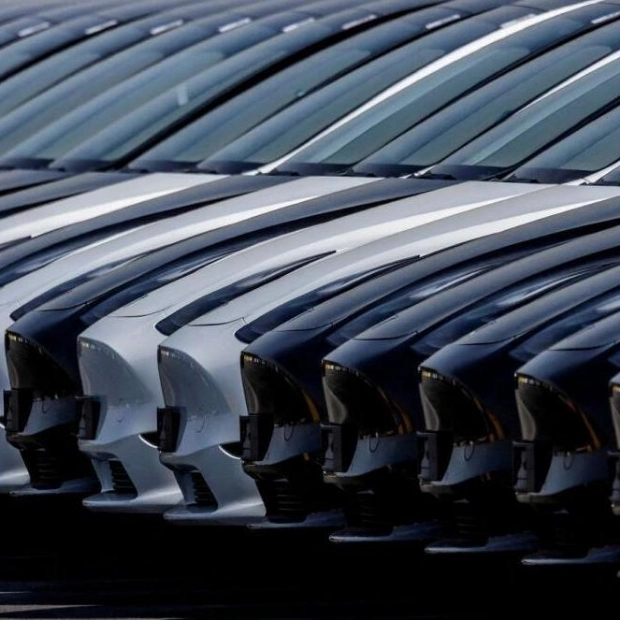Employees at the Volkswagen plant in Zwickau, Germany, are demonstrating with flags of the metalworkers' union IG-Metall on the factory premises. This comes as Volkswagen and unions prepare for the next round of talks over wages and potential plant closures in Germany.
According to an internal memo from Volkswagen’s works council reviewed by Reuters, the automaker spends a higher proportion of sales on labor costs compared to major rivals like BMW, Mercedes-Benz, and Stellantis. This underscores the company’s challenge to remain competitive in its high-cost home market, especially with the arrival of cheaper models from China.
The next round of negotiations, starting on Thursday, involves unions representing approximately 120,000 German workers. Unions are demanding a seven percent pay rise, while Volkswagen is threatening a ten percent cut. Globally, Volkswagen’s proportion of revenue spent on labor has decreased from 18.2 percent in 2020 to 15.4 percent in 2023, but this still exceeds the 9.5 to 11 percent spent by BMW, Mercedes-Benz, and Stellantis, according to the works council memo.
At VW AG, the German subsidiary overseeing the six plants in question, the labor cost ratio is estimated to be between 15.8 and 17.5 percent. The works council’s findings, based on annual reports showing global personnel spending compared to revenue, include all staff, from factory workers to white-collar employees. Reuters verified the calculations.
One reason Volkswagen spends more on labor is its in-house production of components and software, according to Stifel analyst Daniel Schwarz. However, pressure on margins from China necessitates cost-cutting. “The VW brand has been the market leader in Europe since 2005,” Schwarz said. “The problem is not the product, but the costs.”
Germany, where Volkswagen employs nearly 45 percent of its workforce, has the highest labor costs in the global passenger car industry, averaging 62 euros per hour in 2023, up by about a third from a decade ago, according to the German autos association VDA. Union representatives argue that labor costs are a small part of the company’s overall expenses, urging management to cut costs elsewhere to boost profits.
In an internal flyer to staff, the works council highlighted steep drops in earnings at other parts of the group, including Porsche, Audi, and VW Financial Services, which cost the company 5.5 billion euros in the first nine months of the year. “That alone is an argument for why it’s not enough to focus solely on labor costs,” the flyer stated.
VW AG’s plants are the only car factories in Germany, excluding Tesla’s, where wages are not determined by an industry-wide collective agreement but by a separate agreement. Volkswagen canceled this agreement in September to seek cuts at the VW brand, which it deems vital for survival. Large pay cuts would be a tough pill for German unions to swallow, especially after negotiating a 5.5 percent increase in the industry-wide agreement and Tesla raising wages for German staff by 4 percent.
Volkswagen claims that even after planned cuts, its salaries will remain highly competitive. The company’s challenges come amid broader concerns in Germany about competitiveness, as politicians prepare for an election battle in February over how to revive a weakening industrial base. “We are not productive enough at our German sites,” said VW brand chief Thomas Schaefer, pointing to rising costs for energy, materials, and personnel.
In France, Italy, and Spain, where Volkswagen competitors Stellantis and Renault have most of their European plants, auto industry workers earn 47 euros, 33 euros, and 29 euros per hour respectively, according to VDA data. VW AG’s costs are particularly high because they include staff performing administrative functions for the entire Volkswagen Group, often commanding higher salaries.
Volkswagen has announced tens of thousands of job cuts in Germany in recent years, including a pact with unions to slash 23,000 jobs at the VW brand by 2025. However, the transition to electric, software-driven cars and stricter regulations have also led to hiring in areas like software and administration. The number of white-collar workers at VW AG is reaching a similar level to blue-collar workers, according to a source familiar with the matter.
An internal document seen by Reuters showed that while the number of factory workers at VW AG fell by over 8,000 between June 2019 and September 2024, the number of administrative staff rose by around 4,000. Volkswagen declined to comment on these figures.
Source link: https://www.khaleejtimes.com






